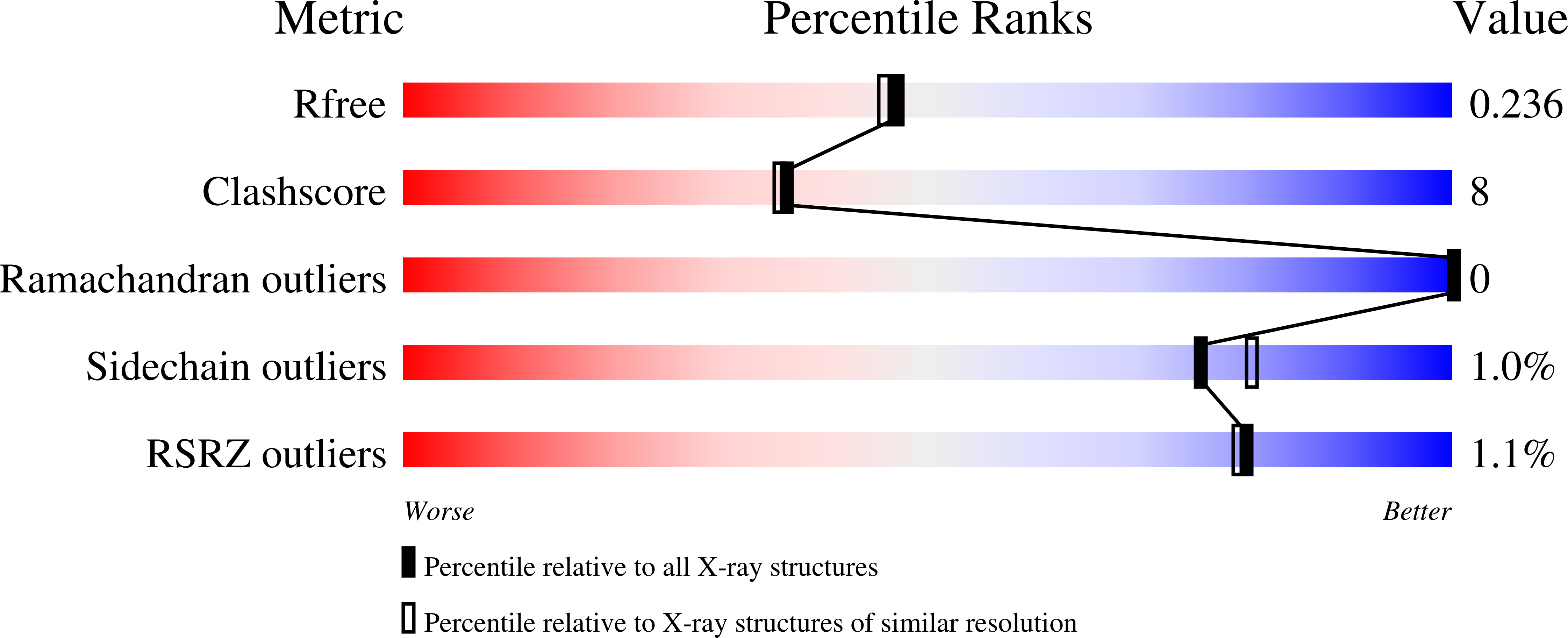Crystal structure of the di-iron/radical protein of ribonucleotide reductase from Corynebacterium ammoniagenes.
Hogbom, M., Huque, Y., Sjoberg, B.M., Nordlund, P.(2002) Biochemistry 41: 1381-1389
- PubMed: 11802741
- DOI: https://doi.org/10.1021/bi011429l
- Primary Citation of Related Structures:
1KGN, 1KGO, 1KGP - PubMed Abstract:
Ribonucleotide reductase (RNR) is the enzyme performing de novo production of the four deoxyribonucleotides needed for DNA synthesis. All mammals as well as some prokaryotes express the class I enzyme which is an alpha(2)beta(2) protein. The smaller of the homodimers, denoted R2, contains a di-iron carboxylate site which, upon reaction with molecular oxygen, generates a stable tyrosyl radical needed for catalysis. The three-dimensional structure of the oxidized class Ib RNR R2 from Corynebacterium ammoniagenes has been determined at 1.85 A resolution and refined to an R-value of 15.8% (R(free) = 21.3%). In addition, structures of both the reduced iron-containing, and manganese-substituted protein have been solved. The C. ammoniagenes R2 has been proposed to be manganese-dependent. The present structure provides evidence that manganese is not oxidized by the protein, in agreement with recent biochemical data, and that no obvious structural abnormalities are seen in the oxidized and reduced iron-containing forms, giving further support that the protein is indeed an iron-dependent RNR R2. The di-manganese structure also provides an explanation for the magnetic properties of this site. The structure of the oxidized C. ammoniagenes R2 also reveals an additional water molecule bridging the radical and the iron site, which has not previously been seen in any other R2 structure and which might have important mechanistic implications.
Organizational Affiliation:
Department of Biochemistry and Biophysics, Arrhenius Laboratories A4, Stockholm University, SE-10691 Stockholm, Sweden.















